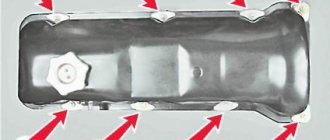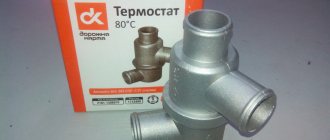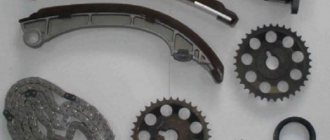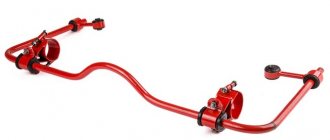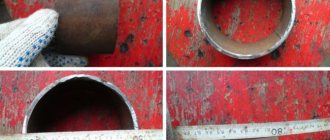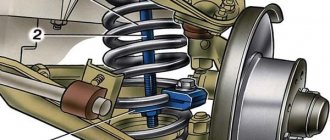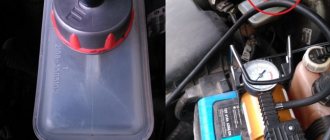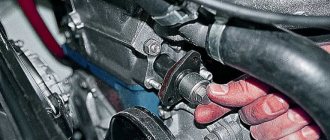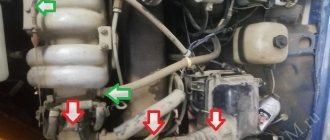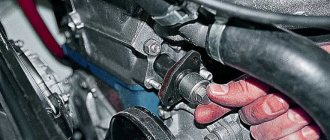Nowadays, cycling is very popular. Having a huge number of positive aspects, this sport is still associated with a high risk of injury. There are many reasons for this, but one of the main ones is driving on bad roads.
An effective means of ensuring the safety of the cyclist and the safety of the bicycle from breakdowns in such situations is an effective additional accessory - a bicycle chain guide. It is this that protects the chain from various impacts and prevents it from jumping off the sprocket, which prevents accidents.
Design features of the device
Today there is a whole series of these products on the market. The design consisting of a rockring with two rollers is a classic option. It mounts directly to the frame and can often replace the front derailleur.
To reduce the weight of the device and reduce its cost, modern rockrings are made in slightly smaller versions; instead of rollers, special frames are installed.
Application of rockring
A chain guide for a bicycle in the form of a rockring is designed to provide power protection to the front part of the transmission. Thanks to its simple design, which is a circle of standard diameter, slightly larger than the dimensions of the largest star, it is not difficult to install.
Assembled using standard fasteners. When installing it, the largest star is not used, since the damper can completely replace it. Also, the operation of the rockring is often combined with the operation of the front derailleur.
Depending on the cost and purpose, it is possible to choose this element made of metal or high-strength plastic that can withstand high impact impacts.
Many owners of two-wheeled vehicles choose a lightweight rockring model, called a banana among cyclists. It is a trimmed part of the circle, capable of reliably covering the most problematic parts of the chain from blows from below.
DIY making
It is not difficult to purchase a bicycle chain guide, but many cyclists prefer to make such devices themselves. It turns out that everything is done quite simply. Special schemes have been developed for rockrings and fastenings, and fixation to the frame stay is done at home, but in terms of effectiveness it is considered more reliable than purchased samples.
What is produced more often:
- partial rockring on explosive fasteners, complete system without damper - made of metal;
- full-fledged ISCG type mount with full-fledged frames - done by hand, no metalworking required;
- individual rollers on partial sprocket mountings;
- The protective frame on the chain is conditionally not considered a sedative system, but it performs its tasks quite effectively.
To install the stabilizer on a bicycle on your own, you will need a squeezer for connecting rods, hexagons, a wrench for removing the carriage, a threaded fastener, and bicycle lubricant. Experts assure that all installation work can be completed within thirty minutes.
Using rollers and frames
Directly playing the role of a chain guide is a roller designed to maintain the chain in the position necessary for high-quality driving. It holds the chain even during quite dangerous driving. Chain guides for bicycles are available on the market in the following variations:
- With top and bottom roller.
- With only one roller, since this is often enough for full functionality, providing reliable protection.
- With rollers of large diameters covering the two largest stars in the system. Such designs are more often used in high-speed bicycles for cycling.
- Having a frame design. Installed to the required tolerances and not subject to constant stress, it is lighter and easier to operate.
The latest bicycle chain guide presented is quite reliable in operation and has a high performance indicator.
Timing chain: how it works and how to change the chain
Since ancient times in Rus', the presence of a chain in the timing drive was considered a good omen. The answer to this is simple: there is an opinion that a chain is something eternal and does not require maintenance. But as you might have guessed, this opinion is false: the chain stretches and wears out remarkably well, which means it needs periodic replacement. In this article we will briefly talk about the design of the gas distribution mechanism and its typical breakdowns, and then we will go to the repair area and replace the chain on an experimental Mitsubishi Pajero with a 4M41 diesel engine. By the way, our car is undergoing a major overhaul - in the last article we already talked about how we put the cylinder head in order after 500,000 kilometers. Next in line is the gas distribution mechanism drive.
There are no more or less critical elements in the engine, but there is still a mechanism, the incorrect assembly of which can only be discovered after installation is completed and an attempt is made to start the engine. Yes, just an attempt - and often unsuccessful. “Jump” the master by one tooth or make a mistake in at least one mark - and hello, disassembly! It’s good if the timing belt drive is a belt drive - and if it’s a chain that is enclosed in a housing and covered with a lid... But first things first.
Why is a timing drive needed?
For those who came here to educate themselves, we will traditionally give a brief excursion into the structure and purpose of the gas distribution mechanism. In short, its role is to provide communication between the opening/closing of valves and the movement of the piston (and with it the crankshaft), for which it is necessary to connect the crankshaft to the camshaft. In terms of the gear ratio, the connection is rigid: it is always 2 to 1 - that is, for every two revolutions of the crankshaft there is one revolution of the camshaft.
In general, the timing drive ensures compliance with the valve timing. Does it sound scary? In reality, everything is not so scary, it’s enough to start with the basics. The engines we are considering are four-stroke, that is, during their operation four strokes are constantly performed: start - compression - power stroke - exhaust. Phases are the valve opening moments expressed in the angle of rotation of the crankshaft. Yes, that’s what they write: the opening angle of the intake valve is 12 degrees before TDC (top dead center, where the piston stops before going down). This means that the valve will begin to open thanks to the camshaft cam when the piston slightly reaches TDC. A little - these are the same 12 degrees of crankshaft rotation. Another 12 degrees clockwise and the piston is at TDC. Well, the phases are a schedule for the opening of valves.
If the engine is equipped with phase shifters (for example, the VANOS system from BMW), then the angles of these phases can change. But valve opening angles do not exist in isolation from the system: the fuel injection system and ignition system (if the engine is gasoline) operate depending on them. It turns out that if the master made a mistake when installing the timing drive, the valve will begin to open not at 12 degrees, but, for example, at 14, but the injection and ignition will work in the hope that everything is correct. Valves that are opened and closed at the wrong time will result in unstable engine operation, and if the “jump” turns out to be significant, then the meeting of the valve with the piston will not be far away.
What types of drives are there?
There are several ways to connect the crankshaft to the camshaft: belt, chain, gear and combined (this is exactly our case). In general, from their descriptions everything is already clear - at least with the first three. In the latter case, gear and chain types are often combined.
Each type of drive has its own advantages and disadvantages. The belt is easy to maintain and relatively inexpensive, the chain is more reliable than the belt, but requires lubrication, the gears are almost perfect, but their weight and installation during assembly are a living hell. They combine different types if it is necessary to achieve the required result for less money.
What can go wrong?
Of course, for different types of timing drives, possible malfunctions and breakdowns also differ. Let's look at them all in order - and start with the belt. The very first and main problem here is the wear of the belt itself, expressed in its fraying and stretching. Belt teeth can also be sheared. Well, the second “weak link”, of course, is the tensioner and intermediate rollers. They, like the belt, wear out and therefore often require replacement along with the belt. At the same time, when replacing the belt, the wear of the teeth on the toothed pulleys of the camshaft drive is also checked.
If the timing belt is driven by a chain, then there are two main types of problems: either the chain is stretched, or the teeth of the sprockets are worn out, or both occur. The most common option is the first. If the chain is replaced, the tensioner shoe and damper are replaced along with it. These two parts are necessary to align the operation of the chain. After all, the belt is elastic in itself and stretches due to its own elasticity. The chain is devoid of such properties - and therefore, so that during operation and changes in speed the chain links do not bite, a damper is installed, which is a metal plate with a plastic working part, against which (of course, not without lubrication) the chain “rubs”. Well, for constant tension of the chain, a tensioner and a shoe are installed, similar to a damper, but fixed only on one side (to be able to move it).
Cassette damper
Often on bicycles used for simple trips around the city, you can see homemade designs of dampers, the so-called cassette ones. These accessories, developed by home-grown craftsmen:
- represent a roller, less often a frame;
- mounted on the chainstay, and can be placed both below and above;
- do not interact with stars.
But, at the same time, they hold the chain perfectly, even when the vehicle moves through large obstacles.
The only drawback with such a damper is the problematic gear shifting. But the ease of manufacture and, of course, the economy of this element ensured its wide popularity among the people.
About fastening methods
To achieve high efficiency when using a chain guide on a bicycle, it must be installed correctly. The following types of mounts are distinguished:
- To attach partial types of protection, which includes “banana”, use explosive mounts. In this case, the damper is placed on a carriage that presses it to the frame.
- ISCG mount, which involves installing the device on the frame by screwing it in three places. They are located in a circle with a diameter of about 60 mm. The distance between the mounting bolts is almost 48 mm.
- The ISCG 05 standard, which appeared just a few years ago, is considered the most progressive today and is used by world-renowned manufacturers of bicycle equipment. In this case, the diameter of the circle is increased to 73 mm, and the mounting points are placed at a distance of up to 53 mm.
Other fastening standards are known, but the ones described above are the most widely used.
How to detect a fault
You can detect a weakened tensioner on a Chevrolet Niva by checking the chain pulls away from the sprocket. But such a check requires removing the protective casing from the car, which is extremely irrational in cases of uncertainty about the proper operation of the tensioner. Therefore, it is recommended to carry out a mandatory check of the chain for tension after 60-100 thousand km. But, if the driver notices a rustling sound in the hood area, which resembles the sound of a diesel engine, then it is important to pay attention to this before the trip. This evidence of a rustling sound indicates that the chain has become loose and is hitting the teeth of the sprockets. Therefore, having discovered such a characteristic sound, it is worth urgently checking the tension.
Where is the device located in the Chevrolet Niva and what does it look like?
The device is located on the passenger side under the hood of the car. Having opened the hood, you need to find the cooling pipes in the area of the front of the cylinder head, under them the hydraulic tensioner itself is located. A photo of the device that is installed on the Chevrolet Niva is located below.
Location of the part in the car
Components and principle of operation of the hydraulic tensioner
As you can see in the photo, the device has a cylindrical shape; it is screwed on the outside with a lid with a small hole through which oil flows. Inside the device there is a small ball and a spring, which ensures free flow of oil in one direction and does not release it in the opposite direction. Inside the device body there is a cylinder with rings. On the inside of the housing walls there are spiral notches that have an inclined shape. When the chain is loosened, the piston, under pressure in the housing, moves to a certain notch on the housing wall. When the tension occurs, the body notches do not allow the piston to take its original position. It is carried out by engaging the piston rings with one-sided notches. This is how the tension device works.
Which models are better to buy?
Today, the majority of both professional and amateur cyclists try to install a chain guide on their bicycle. Everyone knows why they need it, but which one is better to choose?
The pricing policy in this market segment is quite wide. You can pick up a plastic element made in China and pay only a thousand rubles. But if you need a high-quality kit from well-known brands, you will have to pay $100.
Our market for the products in question cannot be called diverse. But, nevertheless, the world's best manufacturers are represented on it. These include:
- Truvativ company, which produces high-quality products;
- UK manufacturer Hope, which uses only modern materials;
- Shimano, which occupies the middle segment in terms of the cost of its products.
Products from the above-mentioned manufacturers certainly do not need additional advertising, but you will have to fork out the money to purchase them.
Although some amateurs are quite capable of making a chain guide for a bicycle with their own hands. It completely fulfills the task and does not have to throw away money.
